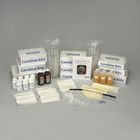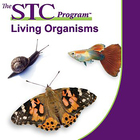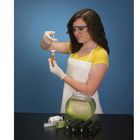Care Guide: Terrestrial Isopods
Living Care Information
Terrestrial Isopods
commonly known as wood louse,
roly-poly, pill bug, sow bug, leg pebble,
potato bug
Quick Start Information
Open the shipment upon arrival, remove the container, and inspect your isopods.
Examine the moist paper towel in the shipping cup. Do not throw away the paper towel.
There will also be a small amount of soil included in the shipping cup. This can be added to your terrarium.
About the Organism
- Terrestrial isopods are land-dwelling crustaceans.
- Females can carry up to 200 eggs in a special pouch, a marsupium, located on the underside of her body.
- The name isopod means “uniform feet.”
- Isopods lack a waxy cuticle. This makes them susceptible to desiccation but allows them to absorb moisture from the air.
- Although similar in size and appearance, pill bugs (Armadillidium) and sow bugs (Porcellio) exhibit different behaviors. When threatened, pill bugs roll into a tight ball for protection, but sow bugs run or remain still, appearing to be dead.
- Domain: Eukarya
- Kingdom: Animalia
- Phylum: Arthropoda
- Class: Malecostraca
- Order: Isopoda
- Family: Armadillidiidae or Porcellionidae
- Genus: Armadillidium or Porcellio
- Species: A. vulgar, P. scaber, or P. laevis
Preparation
Terrestrial isopod samples are shipped in plastic containers with moist paper towel and soil. You will find the isopods in the folds of the paper towel and in or on the soil.
If the paper towel included in your shipment has dried out, sprinkle a little natural spring water on the top paper towel layer as needed to maintain a slightly moistened condition. Terrestrial isopods and their relatives—lobsters, crabs, and shrimp—breathe with gills. Their gills must remain moist to allow for gas exchange.
If you plan to use the isopods within a few days, no further care is needed.
Housing
If you would like to maintain your isopods, you will need to prepare a habitat. We recommend a plastic aquarium/terrarium with a lid. You can also use any plastic container with a lid.
Punch small airholes in the lid of your chosen container if it is not vented, and then mist the container with room-temperature water. Add a 2 to 3-cm layer of moistened (but not saturated) potting soil. On top of the potting soil, place a 4 to 5-cm layer of leaf litter, compost, or hardwood mulch. Do not use pine bark or other mulch that has been treated with chemicals.
Empty the contents of the shipping container, including the paper towel, into the habitat. Gently unfold the paper towel and shake off as many isopods as possible. If you are unable to dislodge all of them, leave the paper towel loosely crumpled in the habitat and replace the lid. Leave the habitat in a darkened area for at least an hour. Most of the isopods will move down into the soil. Use a fine-bristled brush to remove any organisms that remain on the paper towel. You can also leave the paper towel in the habitat. This will not harm the isopods. Mist the inside of the container again, and then replace the lid.
Feeding
Isopods are detritovores and require minimal care other than a humid environment. You can offer your isopods additional food once each week if you desire. Appropriate food items include: fish food flakes, slightly moistened dog chow, leaf litter, or pieces of raw potato, carrot, or apple. Be sure to immediately remove any material that shows signs of mold.
Maintaining and culturing
Place the habitat in an area that receives indirect light and maintains a temperature of 20 to 22 °C (68 to 72 °F). The soil in the habitat should be kept moist. Mist the habitat daily with room-temperature water to provide the necessary level of humidity. Do not allow the habitat to dry out. Isopods move away from light. You are most likely to observe them if you keep their habitat in a dimly lit area.
Disposal
We strongly recommend giving any unwanted organisms to another individual. Terrestrial Isopods can be a nutritious food source for small amphibians and reptiles.
We do not advocate the release of organisms into the environment. Please contact your local (state) Department of Agriculture for any restrictions on the release of organisms.
As a last resort, place unwanted organisms in a sealed container in a freezer for 48 hours. Dispose of the organisms in the regular solid waste.
Biosafety
Wash your hands with soap and water before and after working with any living organism.
Video
FAQs
Our isopods disappeared. Where are they?
Check under the soil. Isopods will avoid bright light. Alternately, leave a slice of raw potato or apple on top of the soil overnight. When you lift it, you may find isopods congregating underneath. For the best observation opportunities, be sure to keep the habitat in a dimly lit area.
Our isopods died while we were observing them with magnifiers. What happened?
Terrestrial isopods must be kept moist in order to breathe. Their gills will dry out quickly if they are not consistently exposed to moisture. To observe the isopods with a hand lens, place them in a shallow cup with damp soil or paper towel. When finished, quickly return the isopods to their habitat.
Can other animals be kept with isopods?
Yes, animals with similar habitat requirements, such as millipedes and bessbugs, can be kept with isopods. We do not recommend keeping predators—such as centipedes, amphibians, or reptiles—with the isopods.
Mold is growing in my isopod habitat. What should I do?
You should increase ventilation in the habitat. Punch more holes in the lid of the container or move your isopods to a container with a vented lid. Be sure to remove any food items or materials that show signs of mold.
Need help?
We want you to have a good experience. Orders and replacements: 800.334.5551, then select Customer Service. Technical support and questions: caresheets@carolina.com





















